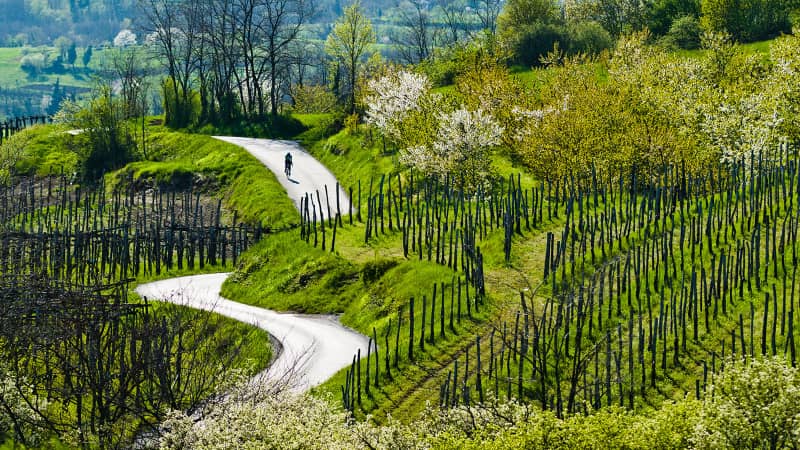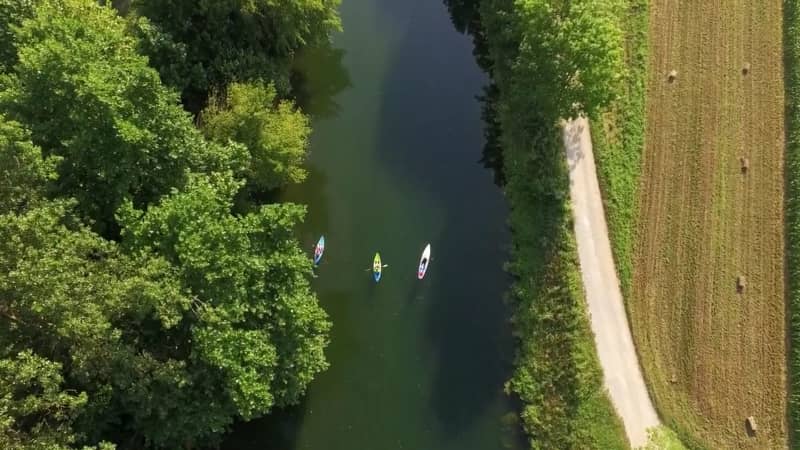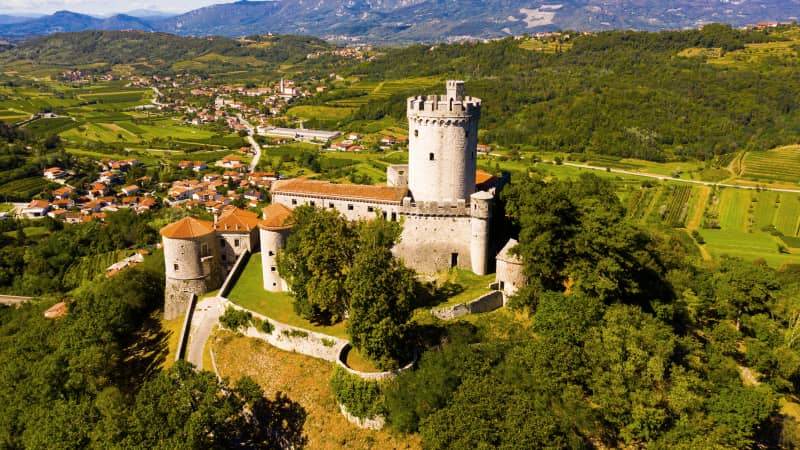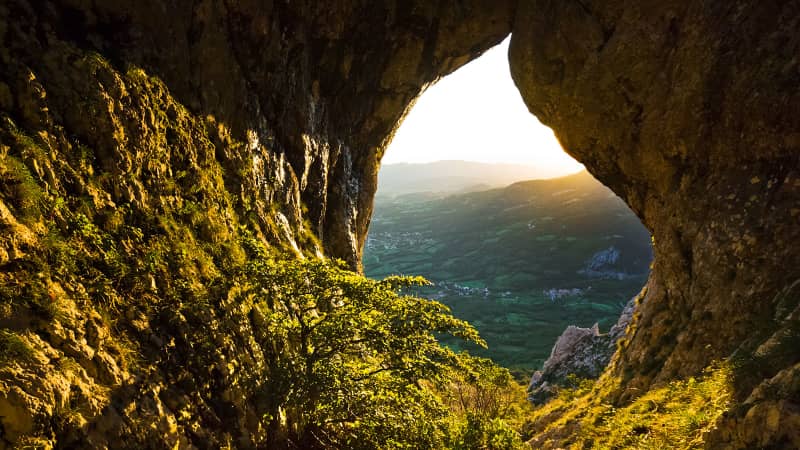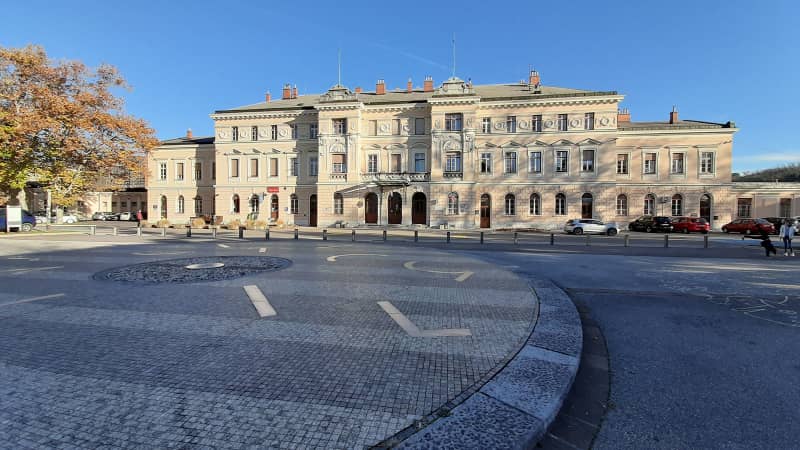(CNN) — It’s less than an hour’s drive from Slovenia’s capital, Ljubljana, yet the Vipava Valley hasn’t really registered on the tourist radar.
This lusciously fertile region that stretches west to the Italian border has a magical combination of exceptionally fine wine and food, dramatic karst landscapes and medieval castles towering over pretty villages.
It even has its own microclimate — a little taste of the Mediterranean wedged between limestone mountains. It’s a place made for outdoor adventures — on foot, on two wheels or on a paraglider floating above the valley.
Here are some of the unmissable sights of the Vipava Valley, for when it’s safe to visit.
Follow the Vipava Valley Wine Road
With the Trnovo Forest Plateau to the north and the Karst Plateau to the south, it’s no wonder that the Vipava Valley is one of most fertile regions in Europe.
Here the fierce burja wind — which Italians know as bora and Croatians as bura — slices through the valley, clearing the air and bringing optimal growing conditions for Slovenia’s top-class wines.
Scores of wineries — plus countless more tiny family vineyards — produce seriously underrated wines, with many using Slovenia’s indigenous grapes, including the zelen and pinela white varieties.
From farm to table
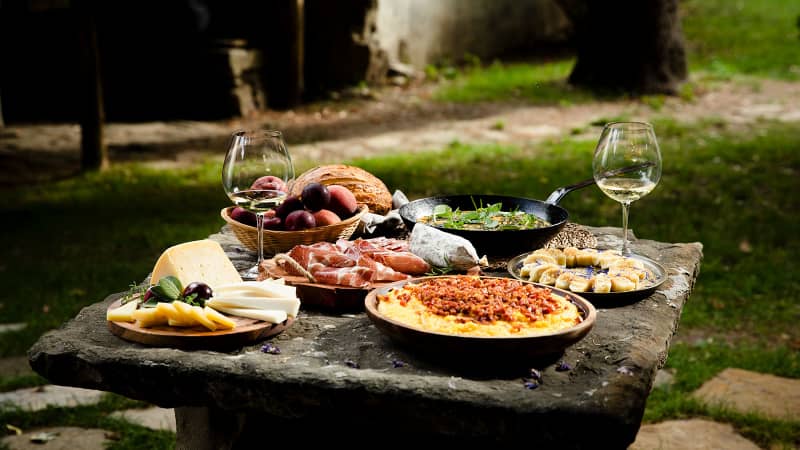
Vipava’s Mediterranean microclimate helps create delicious food.
Courtesy Miha Bratina/Vipavska Dolina
That same burja wind that blows through the vineyards is a big reason why Vipava Valley’s air-dried prosciutto is a major rival for its Italian counterpart.
And this mild Mediterranean microclimate means the valley is filled with orchards groaning with apricots, peaches and persimmons.
For food lovers, there’s everything from the rustic to the refined — from home-reared and home-cooked food in agritourism farms to Michelin-starred restaurants.
Once or twice a year, many of the local farms and wine cellars throw open their doors for the Slovenian tradition of osmica. Over a period of 10 days, you can sample their wine and homemade produce in a makeshift tavern over the course of a convivial evening.
Visit Vipava
Vipava squeezes in a lot of wonders into its compact space, making it an enchanting base from which to explore the region — especially if you’re into wine tourism.
Here the Vipava River’s delta-shaped source and rushing springs bring even more beauty to this town of pastel baroque buildings, pretty bridges and the medieval Baumkirchner Tower hovering over the river.
For lofty views of the town, there’s a hike up the footpath to the ruins of the 11th-century Vipava Castle. A gentler option is a visit to the Wine Museum and the Vipava Wine Shop for a taste of the region’s wines.
Discover nearly 2,000 years of history
In Ajdovščina, one of the region’s largest towns, sit the remains of the Roman Castra fortress near the Hubelj River. Built around the 3rd century, it’s the largest surviving Roman wall in Slovenia, and visitors can find out more about the Roman legacy in the nearby Ajdovščina Museum Collection.
There’s a jump ahead of several centuries a few miles to the west in the lovely hilltop medieval village of Vipavski Križ.
Its narrow lanes are good for wandering, and highlights include its baroque church and a tour of the Capuchin Monastery, with its impressive library of rare manuscripts and collection of baroque art.
For pure romance — and knockout views of the mountainous Vipava landscapes — there’s Rihemberk Castle, which looks out over the village of Branik. Dating from the 13th century, and added to over the centuries, this sprawling castle has the tallest tower in Slovenia.
It’s an atmospheric setting for concerts and weddings, and, if you look up at dusk, you’ll see its large number of resident bats flitting about.
Peek through the Otlica Natural Window
In this limestone landscape packed with beauties, there’s one that stands out. On the edge of the Trnovo Forest Plateau is the Otlica Natural Window (Otliško okno), a gaping hole within the limestone that reveals a glorious view of the Vipava Valley.
It takes about three hours to do the circuit if you follow the well-marked trail starting in the Pale Sport Park in Ajdovščina for five miles — some of it over steep, rocky ground, so you’ll need a decent level of fitness. But the views will be worth the effort.
Get active
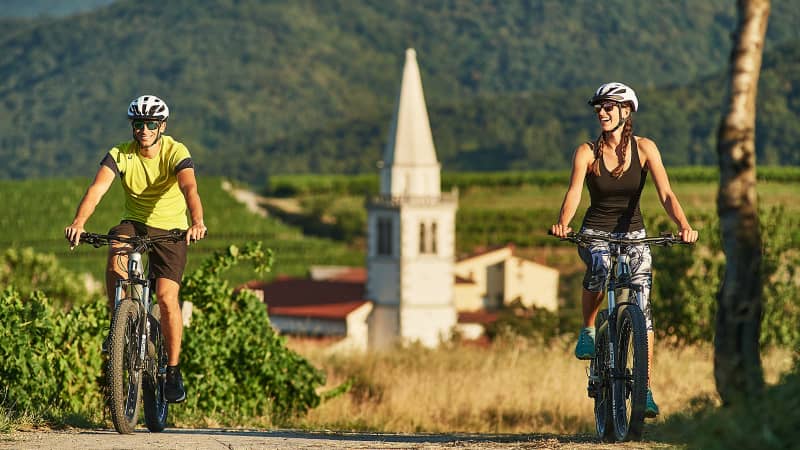
Activities include cycling and hiking through the vineyards.
Courtesy Marijan Močivnik/Vipavska Dolina
The hike to Otlica whets appetites for more active adventures. There are several hundred miles of hiking trails throughout the region, and while many are of medium difficulty, you can find easy routes such as the two-mile educational trail along the Hubelj River.
The nine-mile trail along the edge of the Gora Plateau gives sweeping views, while the five-mile Vitovlje circuit goes past Vitovlje Lake, the only natural lake in the Vipava Valley. On a clear day you can see as far as the Adriatic Sea.
Cyclists also have a range of routes to choose from, some involving relaxing bucolic jaunts through vineyards, while others test your endurance on peaks reaching 6,000 feet.
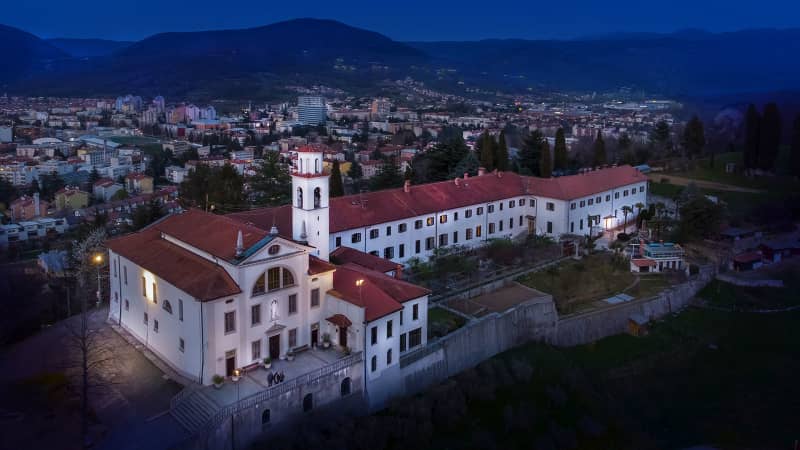
Kostanjevica Monastery can be seen on a hike around the lower Vipava Valley.
Courtesy Matjaž Prešeren / Vipavska Dolina
A gentle start is offered by the two-hour circuit round the lower Vipava Valley from Nova Gorica to Dornberk and back, passing Miren Castle and Kostanjevica Monastery.
Those looking for a challenge can tackle the three-hour climb up to the Gora Plateau and Kovk Hill where the paragliders take off. It’s tempting to join them, as soaring through the sky on a paraglider is one of the most exhilarating ways to explore the Vipava Valley.
Along the Vipava River, kayakers and paddleboarders can be spotted making their way through this lush landscape.
Taste two cultures in Nova Gorica
Slovenia literally meets Italy in the cities of Nova Gorica and Gorizia, where the now seamless border between the two countries runs through Europe Square.
When the 1947 Paris Peace Treaty put Gorizia in Italy, the new city of Nova Gorica was developed, and it has since grown into a lively university city. They’ve combined forces to become the joint European Capital of Culture for 2025, the first cross-border cities to do so.

